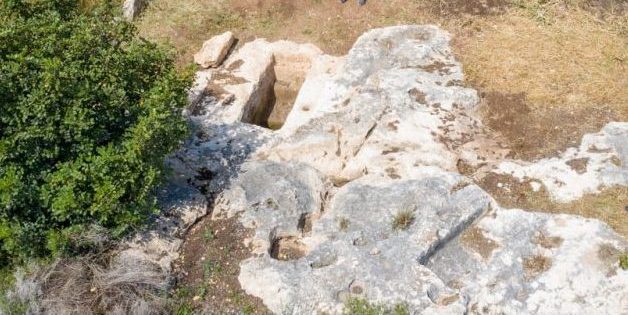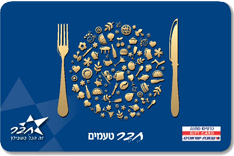Vineyard and Winery
Vineyard-Terroir
Judean Hills Tel Gezer – Revival of the Wine Industry
Gezer, a settlement founded in the 4th century BCE, is strategically situated at the heart of the country, along the King’s Way, a route leading from Egypt northwards and overlooking the coastal plain. Those who resided there enjoyed the privilege of witnessing every arriving ship at the old port of Jaffa and every convoy heading towards Jerusalem. Our vineyard is nestled within the lands of Kfar Bin Nun, gracefully cascading along the slopes of the Judean Hills, which extend from Jerusalem. It occupies the same area where King Solomon’s ancient vineyards once thrived.
The Gezer area has been renowned for its wine production for centuries, with evidence dating back to Biblical times. During a tour around Tel Gezer, one can discover remnants of wineries and presses that bear witness to the ancient tradition of winemaking. Many of these archaeological sites have been meticulously excavated and are open for visitors today. In the wake of the boutique winery and vineyard renaissance, the region is experiencing a resurgence, returning to its historical prominence and gaining momentum once more.
The village of Bin-Nun, nestled in the Ayalon Valley and under the jurisdiction of the Gezer Regional Council, was founded in 1952. It occupies an area steeped in Jewish history dating back over a millennium to the 1st millennium BCE. The village’s original entrance was situated along an ancient Roman road, which served as a crucial link between the King’s Road in the Jerusalem mountains and the coastal road by the sea. This historic route passed close to the hill adjacent to the Bin-Nun Winery, where two ancient winepresses have been unearthed, bearing testimony to the area’s rich vinicultural heritage.
One of the winepresses has been identified by experts as a simple grape-treading surface model from the First Temple period, dating back to 960 B.C. The second winepress is a unique ancient winepress factory believed to be from the Second Temple period, approximately around 500 B.C., utilizing the wooden beam winepress technique. Not far from these ancient winepresses, an archaeological discovery revealed a Mikveh used for ritual purification. This Mikveh is estimated to have originated during the Hasmonean dynasty period, spanning from 140 B.C. to 63 B.C., signifying its Jewish historical significance.
Our region boasts a distinctive microclimate characterized by a cold funnel effect from the valley, ensuring cool nighttime breezes even in the summer months. The air flowing in from the hills of Jerusalem imparts the necessary dryness to our vineyard. This exceptional microclimate not only promotes grape ripening but also facilitates the extraction of minerals from the vineyard’s limestone-rich soil, leading to the accumulation of complex flavors and aromas in the grapes. Our vineyard thrives in heavy, limestone-rich soil, providing an ideal foundation for flavor concentration within the grapes. The gentle slope of the terrain ensures excellent drainage, preventing the accumulation of excess water. These favorable weather conditions and fertile soil have been the cornerstone of quality wine production in this region since the time of King Solomon, and they continue to define our winemaking tradition today.
Treating the Vineyard
Careful cultivation practices, including precise trimming and controlled growth conditions, ensure an ideal balance between the vine’s foliage and the fruit, guaranteeing optimal ripening conditions for the grape clusters. Our meticulous approach to irrigation, coupled with the region’s natural dryness and controlled sun exposure, fosters the development of high-quality grapes characterized by small berries and an intense concentration of flavors.
We are dedicated to meticulously managing the number of grape clusters per vine, ensuring that each grape can absorb the maximum minerals and flavors from both the vine and the soil. This unwavering commitment results in the creation of exquisite, high-quality wines. Our target crop yield is 800kg per dunam, allowing the vine to channel all of its energy into the remaining clusters, intensifying the flavors, colors, and aromas.
Our vineyard boasts a diverse range of grape varieties, including Cabernet Sauvignon, Merlot, Cabernet Franc, Petit Verdot, Petite Sirah, Marselan, Malbec, and Sangiovese. We sourced planting clones from France and Italy through a special order. The planting process was a labor of love, conducted with our own hands and a profound connection to the land. We placed paramount importance on maintaining proper spacing and providing personal attention to each seedling.
Production Process
While wine production itself is not inherently complex and has been mastered by humans for millennia, the pursuit of crafting a truly exceptional product demands professionalism. At Bin-Nun Winery, we firmly believe that to achieve the highest quality wine, one must be willing to invest, nurture, and, above all, wholeheartedly embrace every stage of the winemaking process—from the initial care in the vineyard to the final aging of the wine in bottles.
The winemaking process at our winery commences on the day of harvest, a cherished occasion in both the vineyard and the winery. We take great pride in the fact that all our grapes are meticulously hand-harvested, with the invaluable assistance of friends and family members, beginning at dawn. Each vineyard plot is harvested separately. Upon arrival at our winery, located adjacent to the vineyard, the grapes are carefully cooled for a day to achieve a uniform and controlled temperature to ensure an ideal starting point for the winemaking process.
On the morning of crushing, we undertake a thorough manual sorting of the grapes. Only the finest clusters are selected and then fed into the crusher, which separates the grapes from the stems and gently prepares them for fermentation in tanks by carefully chopping them to the desired level.
We conduct fermentation in refrigerated, stainless steel vats, meticulously managing the pace to suit each grape variety, level of ripeness, and intended wine type. During this crucial stage, our primary objective is to extract and enhance the color, body, and flavors from the grape skins to their fullest potential. Fermentation typically continues in these tanks for a period of 7-14 days until all the sugars in the grapes are converted into alcohol.
Following the completion of alcoholic fermentation, we transfer the must from the tanks to a press. Here, the wine separates from the peels and seeds, flowing into tanks designated for bacterial fermentation. The day of pressing is yet another joyous occasion at our winery, marking the first time the young wine is poured, free from skins or seeds. It’s a moment when the vintner assesses and appreciates the year-long effort of the winegrowers. After pressing, the wine enters a slow, anaerobic fermentation process, known as bacterial fermentation. Once bacterial fermentation concludes, the wine is carefully decanted and transferred for maturation and aging in oak barrels.
We age our wine exclusively in French oak barrels. Within these barrels, the wine undergoes a gradual process of micro-oxygenation through the barrel’s staves, allowing the wine to develop distinctive wood flavors that harmonize with the fruity notes from our vineyard. The duration of aging in barrels varies, typically spanning 1-2 years, contingent upon the specific type of wine we are crafting.
After the completion of the aging process, we carefully blend the wine from various barrels in order to create the distinctive ‘blend’ that will define the wine for that particular year. Through a series of meticulous tastings, we select the optimal combination of flavors and determine the precise blend for each vintage. This chosen blend is then transferred to stainless-steel tanks for clarification, filtering, and ‘settling’ before finally being bottled.
The final steps in the process involve sealing the bottle with a high-quality cork, adding a capsule stamped with our emblem, and affixing the wine label. The newly bottled wine is then carefully laid down in ideal cold and dark conditions for several months before it is ready to be brought to market.






